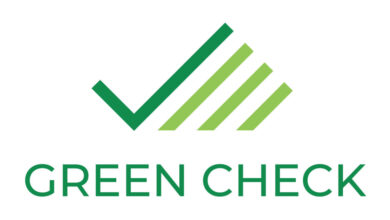Kueski, fintechs ride the BNPL wave in Mexico, where cash is still king

The Buy-Now-Pay-Later market in Mexico is evolving beyond the realm of digital commerce, also emerging as a viable alternative to cash for in-store transactions at brick-and-mortar establishments.
In the past few years, several BNPL providers have popped up in the country to address the underbanked, a segment of the population that accounts for nearly half of adult Mexicans. The country is Latin America’s second-largest market, but also an extremely cash-dependant society, where digitization is growing fast but still far from developed markets or even other Latin American peers.
BNPL fintechs, typically associated with online commerce, have made a name for themselves in recent years. But they are also acknowledging a slower pace of digital adoption, particularly among the underbanked. To accommodate this, they’re expanding their footprint significantly in physical stores, recognizing the enduring relevance of in-person transactions in Mexico’s retail landscape.
Persistence of cash in Mexico
“It’s anyone’s guess as to how rapidly the persistence of cash in Mexico will change,” said Andrew Seiz, SVP, Finance at Kueski, in an interview with Fintech Nexus. “It is changing, but the pace is uncertain, and you do have to accommodate that reality within your own fintech business model.”
Founded in 2012, Kueski is one of the largest such firms in Mexico. The firm has two distinct short-term products: a low-ticket personal loan and a Buy Now Pay Later feature. To date, it has issued more than 16 million loans, and the firm estimates that 1 in 4 of the top e-commerce merchants in Mexico is offering its BNPL service.
Earlier this year, the firm made waves by teaming up with Amazon, introducing BNPL services to the e-commerce giant’s Mexican marketplace. Recently, they announced an in-store payment feature that allows users to make purchases offline using QR codes in an effort to boost their physical store presence.

Fintech Nexus had a conversation with Seiz about the Mexican market opportunity. It has been edited for length and clarity.
How does market sentiment look for startups right now?
We are kind of emerging from the depths. The cycle is turning based on what we see with the U.S. equity market environment. Somewhat gradually, but it is turning. Last year and the year before, you just had a lot of uncertainty over the magnitude of interest rate increases. The difference today is that there’s less uncertainty about where rates will peak, and that excitement that’s benefited certain parts of the ecosystem in the past wasn’t really evident 12 months ago as it is today. So that’s definitely helping.
Is this improved outlook encouraging Kueski to lend more?
Our risk appetite is solid. The portfolio duration is very short, whether on the Buy, Now Pay Later side or cash lending. Our loan maturity can be anywhere from 30 days to six months. This allows us to be nimble and have a consistent risk appetite regardless of the cycle. Even during COVID, though there was a very significant macroeconomic shock, we could adjust very quickly given that we do not really need to take a three-year view when it comes to underwriting, but rather, it would be much shorter.
How does Kueski navigate loan default risk in Latin America?
The company was founded almost 12 years ago, and we’ve extended north of 16 million loans in that period of time. Because of that volume, we have a lot of data that helps us with our credit decisions. So our data sets are pretty extensive and comprehensive, and given the market segment that we’re focused on, it’s very important that you draw on these to make decisions. And, you know, that’s the key to some 20 companies in the space doing what we are doing. Our portfolio is very granular, made of a large number of very small loans, and what we’ve seen is that our credit is generally very stable throughout cycles.
What is the rationale behind the strategy to focus on in-store payments?
We see a large opportunity in (offering payments at) physical stores, which reflects the persistence of cash in Mexico. E-commerce penetration has improved significantly over the past couple of years, but shopping is still done (mostly) in physical stores. Internet connectivity, too, is inconsistent a lot of the time, and so being able to facilitate payments without it just makes people more inclined to want to use our product. We’re seeing digital adoption go up very quickly simply because of its convenience. But one must take into account the persistence of cash in transactions in Mexico. It’s anyone’s guess as to how rapidly that will change. It is changing, but the pace is uncertain. So regardless of the view that you take, you do have to accommodate that reality and kind of hedge for that within your own fintech business model.
What are Kueski’s expectations for 2024 in Mexico?
We’re very constructive about the outlook for Mexico in 2024. Both for the cash lending business, where we think demand will be strong and for the BNPL business across our online and in-store channels. There is a greater interest in Mexico both from a direct investment standpoint and from what we have seen with the strength of the peso. In the context of uncertainty in the world economy, Mexico has plenty of macro stability.



